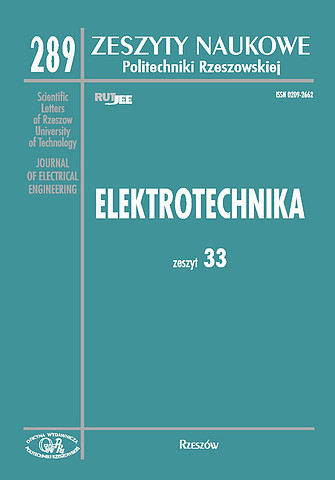Abstract
The main objective of generating electricity in combination with thermal energy in cogeneration devices is to minimize energy loss, and thus the cost of the transfer of energy over long distances. The article provides an introduction to the problem of the optimal use of synchronous generator not only to produce electricity and thermal energy, which in this case is treated as waste energy, but also to improve the quality of electricity in an internal installation of the plant. I have analysed the impact which the synchronous generator with a nominal active power of 192kW (apparent power 276kVA) and rated voltage of 0,4kV installed in the cogeneration device with internal combustion engine fuelled by biogas has on internal electrical installation of the plant. I have also taken into account the economic aspect and the influence on the environment. The technology of burning gaseous fuels in heat engines is considered to be environmentally-friendly. It is mainly linked to the emission of gaseous compounds in the form of CO, SO2, NOx, aliphatic hydrocarbons and trace amounts of dust. It was stated that cogeneration regulatory systems and reactive power compensation system need to be linked in installations where the electrical Energy produced is comparable with electrical power charged from the power grid. This is connected with the problems of the overcompensation of reactive power using the lowest level battery of capacitors. Tests and measurements have been performed on an active object in wastewater treatment plant in Dębica with the use of electrical power analyzer and oscilloscope.
References
[2] Tadeusz Glinka, Zeszyty Problemowe – Maszyny elektryczne Nr 1/2013 (98) BOBRME KOMEL, Katowice str. 51 do 62.
[3] Strzelecki R., Supronowicz H.: Współczynnik mocy w systemach zasilania prądu przemiennego i metody jego poprawy, OWPW, Warszawa 2000.
[4] Buła D., Grabowski M., Lewandowski., Maciążek M., Pasko M., Piwowar A., Walczak J. Analiza i optymalizacja rozmieszczenia energetycznych filtrów aktywnych, Monografia, Wydawnictwo Politechniki Śląskiej, Gliwice 2013 r.





